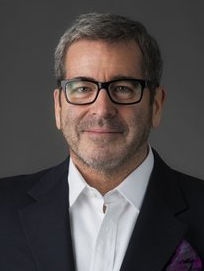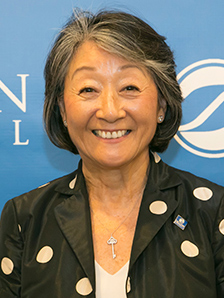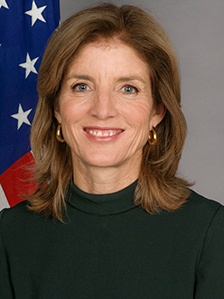Fukushima Dai-ichi and the Ocean:
10 years of study and insight
Free event
Session 1: Tokyo Panel - VIDEO BELOW
March 4, 7:00 - 9:00 p.m. JST (5:00 - 7:00 a.m. EST)
With simultaneous translation to Japanese and English
Session 2: US East Coast Panel - VIDEO BELOW
March 4, 7:00 - 9:00 p.m. EST (March 5, 9:00 - 11:00 a.m. JST)
Please Note: Aside from the keynote presenters, the program for both sessions was the same.
日米プログラムでは基調講演のみが異なり、他内容は同じになります。

Fukushima Dai-ichi and the Ocean:
10 years of study and insight
Thursday, March 4, 2021
Session 1: Tokyo Panel: 7:00 - 9:00 p.m. JST (5:00 - 7:00 a.m. EST)
With simultaneous translation to Japanese and English
Session 2: US East Coast Panel: 7:00 - 9:00 p.m. EST (March 5, 9:00 - 11:00 a.m. JST)
The events in Japan that began on March 11, 2011, with the country’s largest recorded earthquake and a tsunami of remarkable power, led to releases of radioactive materials from the Fukushima Dai-ichi Nuclear Power Plant that continue today. For humanity and for the oceans, the magnitude, composition, and variety of releases that have occurred over the past 10 years have been unprecedented, and the lessons we continue to learn resonate around the world.
Join us to hear from experts who have studied the impacts and consequences of Fukushima Dai-ichi for the past decade and what events have meant for the ocean and for society.
Video Recordings
Session 1
March 4, 2021, 7:00 - 9:00 p.m.
Japan Standard Time
English version
Japanese version
Session 2
March 4, 2021, 7:00 - 9:00 p.m.
U.S. Eastern Standard Time
English version
Program
Introduction

Moderator
Miles O'Brien
Science Correspondent, PBS NewsHour
Keynote

Keynote: Session 1
Atsuko Toko Fish
Trustee, Fish Family Foundation
Founder, Japanese Women’s Leadership Initiative
March 4, 2021, 7:00 - 9:00 p.m.
Japan Standard Time

Keynote: Session 2
Caroline Kennedy
Former U.S. Ambassador to Japan
March 4, 2021, 7:00 - 9:00 p.m.
U.S. Eastern Standard Time
Panelists

What Happened
Jota Kanda, Tokyo University of Marine Science and Technology / President of Oceanographic Society of Japan
What were the events in 2011 that led to releases from the nuclear power plant; what was the source, nature, and sequence of radioactive releases; how did events in the ocean compare to other radioactivity sources; what are the prospects for future releases or similar events?
Read bio
Dr. Jota Kanda completed his Ph.D. in 1987 at the former Ocean Research Institute, the University of Tokyo. He is currently a Professor; serves as the Vice President, at Tokyo University of Marine Science and Technology; and, since 2019, has been the President of the Oceanographic Society of Japan (JOS). His research extends to various processes of material cycling in marine systems. After the incident at the Fukushima Dai-ichi Nuclear Power Plant, he jointly organized and led several research expeditions in coastal waters off Fukushima.

Consequences for the Ocean
Ken Buesseler, Senior Scientist, Woods Hole Oceanographic Institution, USA
What was released into the ocean and what are the short- and long-term consequences for what was released; how do the various radionuclides, their fates, and long-term impacts compare; how were radionuclides transported to the ocean from different sources; what is the long-term fate for these different radionuclides?
Read bio
Dr. Ken Buesseler is a marine radiochemist at the Woods Hole Oceanographic Institution who has studied fallout from atmospheric nuclear weapons testing, Chernobyl impacts on the Black Sea, and radionuclide contaminants in the Pacific resulting from nuclear testing on the Marshall Islands and the Fukushima nuclear power plants. He is a Fellow of the American Geophysical Union; a foreign member of the Dutch Academy of Sciences; and a Fellow of the American Association for the Advancement of Science. In 2011, he was noted as the top-cited ocean scientist for the decade 2000-2010 by the Times Higher Education. He is currently Director of the Center for Marine and Environmental Radioactivity and founded the citizen-scientists campaign “Our Radioactive Ocean.”

Biological Uptake
Sabine Charmasson, Senior Scientist, Institut de Radioprotection et de Sûreté Nucléaire, (IRSN), France
How did radioactive isotopes accumulate in different physical and biological systems and why; how did the releases compare to natural radionuclides in the marine system; what were the impacts of releases on fisheries short- and long-term; what are projections for the future of marine life and ecosystems?
Read bio
Dr. Sabine Charmasson holds a State Ph.D. degree in Oceanography and is currently Senior Expert at the Institut de Radioprotection et de Sûreté Nucléaire (IRSN) in France. As a marine radioecologist, she studies the fate and behavior of both natural and anthropogenic radionuclides in the marine ecosystems. Dr. Charmsson’s research focuses on Rhone river inputs to the Mediterranean Sea and their behavior in the marine environment.

Science and Society
Azby Brown, Lead Researcher, Safecast Tokyo, Japan
What did the Japanese and international public know and when; what were the effects of misinformation and rumors; how did public releases of information translate to reducing human health impacts; how did different media sources compare; how did what did we learn and what does it mean for the future of disaster communications and policy-related decision-making?
Read bio
Azby Brown has lived in Japan since 1985 and is a leading authority on Japanese architecture, design, and environmentalism. Since the Fukushima Nuclear Power Plant disaster in March 2011, he has been lead researcher for Safecast, a highly successful global volunteer-based citizen-science organization devoted to developing new technology platforms for crowdsourced environmental monitoring which promote open-source and open data principles.
Panel Discussion and Audience Q&A
Closing Remarks
プログラム
セッション 1
日本時間
2021年3月4日 午後 7:00 - 9:00
英語講演は同時通訳により日本語でご覧になれます。
セッション 2
アメリカ東部標準時
2021年3月4日 午後 7:00 - 9:00
講演は全て英語になります。
講演者紹介

司会
マイルズ オブライアン
Science Correspondent, PBS NewsHour
基調講演

基調講演 :セッション1
フィッシュ東光厚子
フィッシュファミリー財団理事
日本時間
2021年3月4日午後7:00 - 9:00

基調講演:セッション 2
キャロライン ケネディ
第29代駐日アメリカ合衆国大使
アメリカ東部標準時
2021年3月4日午後7:00 - 9:00
Panelists

事故の概要
神田穣太, 東京海洋大学教授/ 日本海洋学会会長
原子力発電所からの環境への放射性物質の放出をもたらした2011年の事故の概要は?
放射性物質の放出源、性質、経路は?
事故による海洋への影響は他の放射性物質の放出源に比べてどうだったか?
今後起こりうる放射性物質の放出や同様の事象は?
Read bio
神田穣太 東京海洋大学教授、副学長。1987年に東京大学海洋研究所で博士号を取得。2019年より日本海洋学会 (JOS) 会長。海洋における様々な物質循環過程についての研究に取り組み、福島第一原発事故後は、福島沿岸海域における合同海洋調査を主導した。

海洋への影響
ケン ベッセラー, 上級科学者, ウッズホール海洋研究所, アメリカ
海洋には何が放出され、短期的、長期的にどのような結果をもたらしたのか?
放射性核種の行方と長期的な影響は?
放射性核種はどのようにしてさまざまな発生源から海にもたらされたのか?
放射性核種の長期的な行方は?
Read bio
ケン ベッセラー ウッズホール海洋研究所の海洋放射化学者。核実験由来の放射性降下物の調査、チェルノブイリ原発事故による黒海への影響、マーシャル諸島での核実験や福島第一原発事故によって放出された放射性核種による太平洋の汚染についての研究を進めている。アメリカ地球物理学連合フェロー、オランダ科学アカデミー外国人会員及び アメリカ科学振興協会フェロー。 2011年 Times Higher Education において2000年から2010年までの10年間で最も引用された海洋科学者に選出され注目を浴びた。現在は海洋・環境放射能センター の所長であり、福島第一原発事故後に一般市民による市民科学者キャンペーン“Our Radioactive Ocean.”を設立している。

生物による取り込み
サビーヌ チャーマソン上級科学者, フランス放射線防護・原子力安全研究所, フランス
放射性核種はなぜ、どのようにして異なる過程を経て物理的、生物学的に蓄積したのか?
海洋に存在する天然放射性核種とどのように比較できるか?
放射性物質の放出による漁業への短期的、長期的な影響は?
海洋生物と生態系の将来は?
Read bio
サビーヌ チャーマソン フランス放射線防護・原子力安全研究所 (IRSN) 上級専門家、博士(海洋学)。海洋放射線生態学者として、天然および人工放射性核種の海洋生態系への移行と挙動について研究を行ってきた。近年は主に地中海へのローヌ川の流入とその海洋環境への影響について研究を進めている。

科学と社会:
アズビー ブラウン, 主任研究員, Safecast Tokyo, 日本
日本と国際社会は、いつ、何を知ったのか?
誤報と噂による影響は?
情報公開は、人々の健康への影響を減らすことにどのように活かされたか?
様々な情報源を比較すると?
私たちは、何をどのようにして学び、それらが今後の災害コミュニケーションや政策決定にどのように役立たせられるか?
Read bio
アズビー ブラウン 日本の建築、デザイン、そして環境保護の第一人者。1985年より日本在住。 2011年3月の福島第一原発事故以来、オープンソースとオープンデータを原則とする環境モニタリングのための新しいテクノロジープラットフォームを開発する、クラウドソーシングによるグローバルなボランティアベースの市民科学プロジェクトSafecastの主任研究員を務めている。
